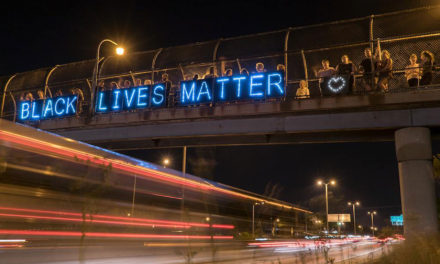
Two new reports produced for Senate investigators say that Russian influence efforts infected every major social media platform, extensively targeted African-Americans and amounted to what researchers called a “propaganda war against American citizens.”
The reports, which were drawn up by private cybersecurity firms on behalf of the Senate intelligence committee, offer the most comprehensive look yet at Russia’s online influence operations. They are based on information provided by the panel and the social media companies themselves.
The reports confirm the U.S. spy agencies’ overarching conclusions that Russia’s efforts ahead of the 2016 election aimed to sow discord, hurt Hillary Clinton and help Donald Trump.
They also echo a warning that U.S. officials have been making for months: that Moscow’s nefarious online activity did not end on Election Day, but rather continue to target Americans to this day. The reports offer new details on the activities of the Internet Research Agency, the Kremlin-backed troll farm based in St. Petersburg, Russia, that drove Moscow’s online operations.
That entity and 13 of its employees have been charged as part of Justice Department special counsel Robert Mueller’s investigation into Russian interference in the 2016 election.
Strategy to divide
The data in the reports “demonstrates how aggressively Russia sought to divide Americans by race, religion and ideology, and how the IRA actively worked to erode trust in our democratic institutions,” said the committee’s Republican chairman, Richard Burr.
The panel’s top Democrat, Mark Warner, said the reports indicate that “these attacks against our country were much more comprehensive, calculating and widespread than previously revealed.”
One of the reports, compiled by researchers at the cybersecurity firm New Knowledge, says the IRA’s most prolific efforts on Facebook and Instagram targeted African-Americans.
“The degree of integration into authentic black community media was not replicated in the otherwise right-leaning or otherwise left-leaning content,” the report concludes.
The goal, it says, appears to have been on “developing black audiences and recruiting black Americans as assets.” The New Knowledge report also challenges statements from Facebook by Twitter regarding the IRA’s efforts to suppress voters.
It says the troll farm had a three-pronged approach on Facebook, Twitter, Instagram and YouTube to suppress voters: malicious misdirection, such as “text-to-vote scams;” candidate support redirection, such as voting for a third party; and turnout depression, such as, “stay at home on Election Day, your vote doesn’t matter.”
Instagram was a bigger platform than known
The new research also points to the previously underappreciated prominence of the IRA’s use of Instagram. It notes that IRA posts on the photo-sharing platform received 187 million engagements, which dwarfed the 76.5 million engagements that IRA posts received on Facebook.
The study also notes that as media coverage in the U.S. zeroed in on the IRA’s operations on Facebook and Twitter, the group shifted much of its activities to Instagram.
“Instagram engagement outperformed Facebook, which may indicate its strength as a tool in image-centric memetic (meme) warfare,” the report says. “Our assessment is that Instagram is likely to be a key battleground on an ongoing basis.”
The second report was drawn up by researchers with the Computational Propaganda Project at Oxford University and the analytical firm Graphika. It says the IRA’s activities targeting the U.S. began on Twitter in 2013, but quickly expanded to a broader effort that included activities on Facebook, Instagram, and YouTube, among others.
The IRA’s efforts, the report says, did not stop after it was called out for its interference in the 2016 election. And it notes that spikes in the IRA’s advertising and organic activity match up with important dates in U.S. politics, crises and international events.
Russian influence operatives not only sought to turn up the volume on political controversies online. They also, in some cases, helped organized rallies in the real world at which Americans turned up to protest in person.
Ryan Lucas
Originally published on Wisconsin Public Radio as New Reports Detail Expansive Russia Disinformation Scheme Targeting U.S.
















